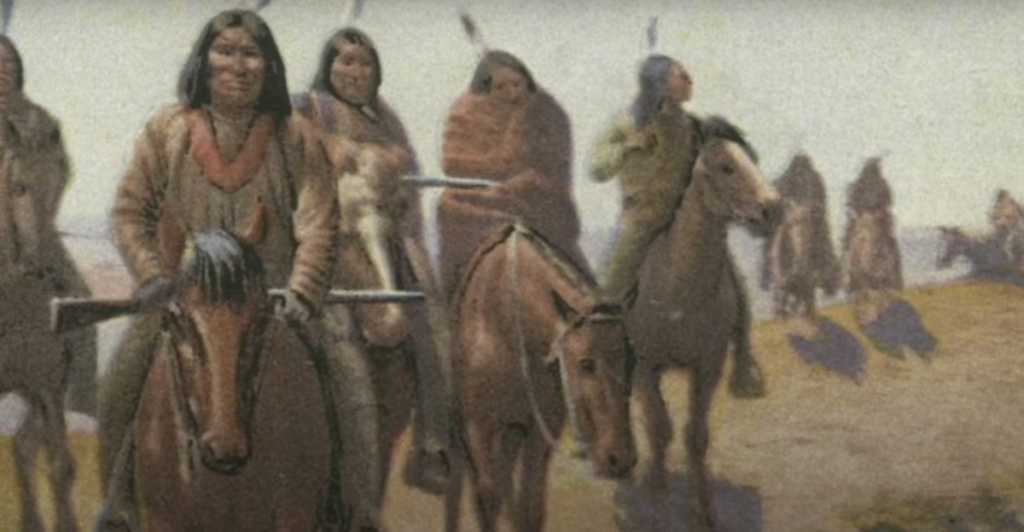
Olive Oatman made headlines in 1856. She was a young white girl who lived with Native Americans. Olive had a curious blue tattoo on her chin to prove it. Her story is one of survival, tragedy and resilience. People were fascinated by her, and still are today. This is her story.
The Oatman Family’s Journey

The Oatmans were a Mormon family traveling west in 1850. For religious reasons, they looked to settle in California. But the journey was rough and unsafe, and they eventually became isolated from the rest of their traveling group in the Arizona desert.
The Attack

Disaster struck when the family was attacked by a Native American group. Researchers believe it might have been a tribe called the Yavapai. Both parents and four children were killed. Olive who was 14 at the time, and her sister Mary Ann who was 7, were kidnapped. Their 15-year-old brother (Lorenzo Oatman) was left for dead.
Captivity With The Yavapai

Olive and Mary Ann spent a year as slaves for the Yavapai. They were forced to do hard labor and lived in terrible conditions. The experience was harsh, but it didn’t last forever. The Yavapai traded them for supplies with another tribe, the Mohave.
A New Life With The Mohave

Life with the Mohave was different. The girls were considered members of the tribe. They were fed, given shelter and a sense of belonging. The Mohave also gave Olive her famous tattoo, a cultural custom for all members. Some believe it meant she was only a slave, but it likely marked her as one of them.
Did Olive Want To Stay?

Some believe Olive and Mary Ann had completely accepted their new situation and life. When white surveyors visited the Mohave, the girls could have asked to be rescued, but they didn’t. We don’t know if it is because they were scared of the consequences they may have faced or because they actually felt like they belonged to the tribe: we just don’t know for sure.
Tragedy Strikes Again

Misfortune struck the Mohave tribe in 1855. A major drought meant that crops failed and people starved. Mary Ann, Olive’s sister, was one among many who did not make it. She died at 10 years old. Olive was left alone, the only survivor of her family. Olive also wasn’t sure if Lorenzo, her brother, was still alive after the raid. She hadn’t seen him in years.
Rumors And Rescue

Word was going around that a young white girl was living with a Native American tribe. Settlers pressured the tribe to return her. The Mohave were resistant at first, but they were afraid of the U.S. government’s possible retaliation. They finally agreed to exchange Olive for some key supplies. She was taken to Fort Yuma in 1856. Olive did not want to leave the tribe. She cried as she was torn away from her new Mohave family. She called in despair for her adopted sister Topeka. After years in the tribe, she was thrown once again into a new life.
Fame And A New Life

At Fort Yuma, Olive was shocked to see her brother Lorenzo again. She discovered that he had been looking for her since their family was attacked. The local press went wild over this astonishing news; Olive became known as “the girl with the Mohave tattoo.” Olive’s story became a book titled “Life Among the Indians.” She toured all over, giving speeches about her shocking experience. The funds from the book eventually paid for her and her brother Lorenzo’s education. Some while later, Olive married a rancher by the name of John Fairchild and moved to Texas.
Olive’s Legacy

Olive’s journey was undeniably sad but inspiring. She lost her family and her life as she knew it. But against all odds, she survived. Olive is who she is today because of what she experienced. Living in both a white American and Native American world, her story still captivates people today. Many portraits depict Olive marked with her unusual tattoo like the sign of a past she could not erase.
Sources
Olive Oatman: The Girl With the Mojave Tattoo
The Girl With the Tattooed Face








